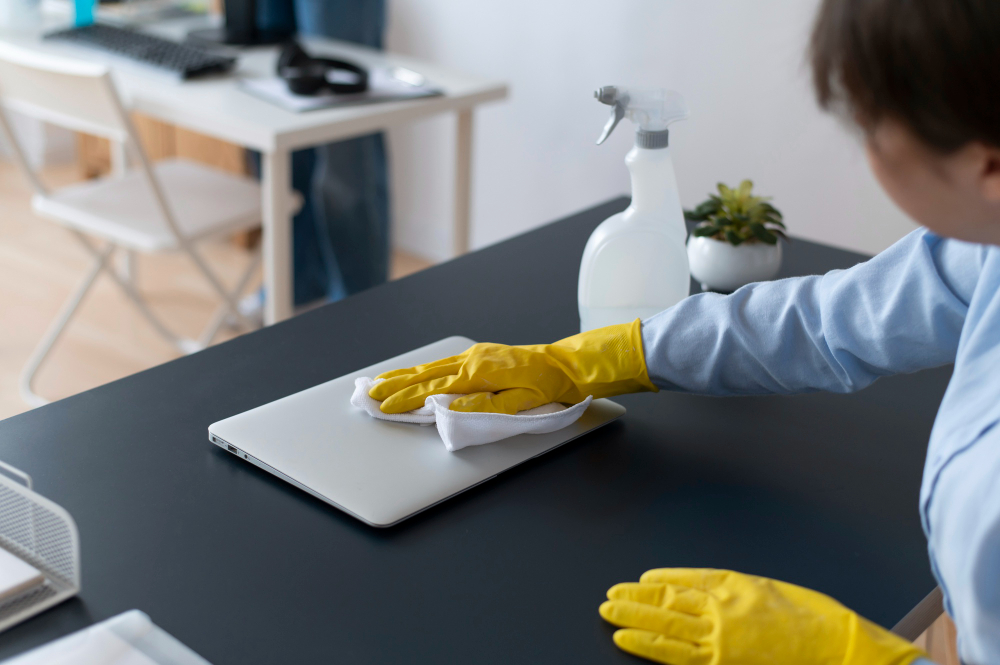SERVING NYC

OBI C. ENE | AUGUST 16, 2023 - 12:30PM

Read and Digest the 10 Rules Listed Below;

When it comes to keeping your [product] in pristine condition, it is crucial to follow proper cleaning techniques and maintenance practices. Whether you own a [product] made of delicate glass, elegant wood, durable metal, or any other material, understanding the best cleaning methods and avoiding common mistakes can significantly prolong its lifespan and enhance its appearance. By using gentle cleansers and specific tools suitable for each material, you can ensure that your [product] remains in top-notch condition for years to come. Additionally, regularly inspecting and addressing any minor damages or wear can prevent further deterioration and preserve the beauty and functionality of your beloved [product]. Remember, investing a little time and effort in maintaining your [product] will pay off in the long run, as it will continue to bring you joy and admiration for many years to come.
In this comprehensive guide, we will delve into every aspect of [product] cleaning, providing expert tips, user-friendly instructions, and essential tools to help you maintain your cherished possessions with ease.
In order to effectively and safely clean your [product], it is of utmost importance to have a comprehensive understanding of the specific material it is composed of. Different materials require distinct cleaning methods to ensure that no harm or discoloration occurs. To assist you in this endeavor, we have compiled a thorough and detailed list of common materials along with their corresponding cleaning techniques. By following these guidelines, you can confidently maintain the longevity and pristine condition of your [product].
Glass: For glass [products], a mixture of equal parts vinegar and water can work wonders. Avoid using abrasive materials that could scratch the surface and opt for lint-free microfiber cloths for a streak-free shine.
Wood: To clean wooden [products], avoid using harsh chemicals that may strip away the natural finish. Instead, use a soft cloth dampened with mild soap and water. Regularly apply furniture polish or wax to preserve the wood’s natural luster.
Metal: Metal [products], such as stainless steel or copper, can be cleaned with a mixture of warm water and mild dish soap. Avoid using abrasive pads or harsh chemicals that may cause scratches or tarnishing. Dry thoroughly to prevent water spots.
While cleaning your [product], it’s crucial to be aware of common mistakes that can have adverse effects on its appearance and longevity. Here are a few pitfalls to avoid:
Using Incorrect Cleaning Products: Always refer to the manufacturer’s guidelines for recommended cleaning products. Using the wrong cleaners can lead to discoloration or damage.
Scrubbing vigorously: Avoid applying excessive pressure or using abrasive scrubbers, as they can scratch or dull the surface of your [product]. Instead, opt for gentle cleaning techniques.
Neglecting Regular Maintenance: Regular cleaning and maintenance can prevent buildup and keep your [product] looking its best. Create a cleaning schedule to ensure you stay on top of the task.
To extend the lifespan of your [product], there are several best practices you should incorporate into your cleaning routine:
Regularly dusting your [product] is essential for maintaining its cleanliness and preventing the build-up of dirt, dust, and debris. By using a soft, lint-free cloth or a microfiber duster, you can effectively remove even the tiniest particles, ensuring that your [product] stays in pristine condition. This simple yet important step will not only enhance the appearance of your [product], but also contribute to its longevity and overall performance. So, make it a habit to give your [product] a thorough dusting on a regular basis, and enjoy the satisfaction of a clean and well-maintained item.
To protect your [product] against sunlight, it’s important to be aware that prolonged exposure can lead to fading or discoloration. One effective solution is to consider using blinds, curtains, or UV-blocking films to shield your [product] from direct sunlight. These additional layers of protection not only minimize the harmful effects of sunlight but also preserve the quality and appearance of your [product] in the long run. So, don’t hesitate to take this extra step to ensure the longevity and beauty of your [product].
Address spills immediately to prevent stains or damage. When a spill occurs, act promptly by gently blotting it with a clean cloth. Avoid rubbing the spill, as this can spread the stain further and make it more difficult to remove. Taking quick action will help maintain the cleanliness and appearance of your belongings.
To provide you with even more assistance, I would like to share some valuable expert tips and effective troubleshooting techniques that can help you successfully overcome a wide range of common cleaning challenges. These tried-and-true methods have been carefully curated to ensure that you have all the information and guidance you need to tackle any cleaning task with confidence and achieve outstanding results. Whether you’re dealing with stubborn stains, tough grime, or hard-to-reach areas, these techniques will equip you with the knowledge and strategies necessary to maintain a clean and tidy environment effortlessly.
Removing Stubborn Stains: For stubborn stains, mix baking soda with water to create a paste. Apply the paste to the affected area, let it sit for a few minutes, then gently scrub with a soft cloth or sponge. Rinse and dry thoroughly.
Avoiding Watermarks: To prevent watermarks on your [product], use a soft, absorbent cloth to dry it immediately after cleaning. This will help eliminate any residual moisture that could leave marks.
Protective Coating: Applying a protective coating, such as wax or a sealant, can provide an extra layer of defense against stains and scratches. Follow the manufacturer’s instructions for application and reapplication.
Your Essential Cleaning Tools
To simplify your cleaning routine, here are some essential tools to have on hand:
By following these expert tips, avoiding common mistakes, and incorporating best practices into your cleaning routine, you can maintain your [product] in pristine condition for years to come. Remember, each [product] may have specific care instructions, so always refer to the manufacturer’s guidelines for optimal cleaning methods. With proper care and attention, your [product] will continue to shine and bring joy to your everyday life.
Our Mascot of the Week





(973) 393-5677